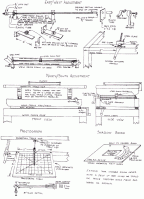Issue 3 – Index of selected articles
Issue 3 – Winter 1982 Editor’s Comment Reader’s Letters Making Puppets for Stop-motion Films Colin Dunn describes puppet making methods used by professional animators. Building an Animation Rostrum – part 3 Brian Clare concludes the building of a rostrum in his garage. The Perils of Plasticine Lewis Cooper gives us some tips on making plasticine … Read more

